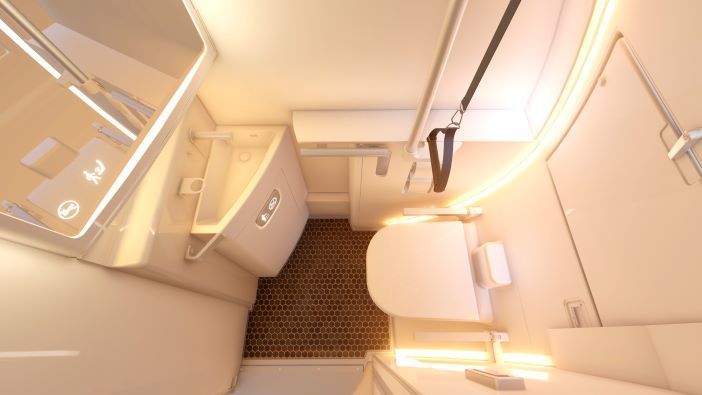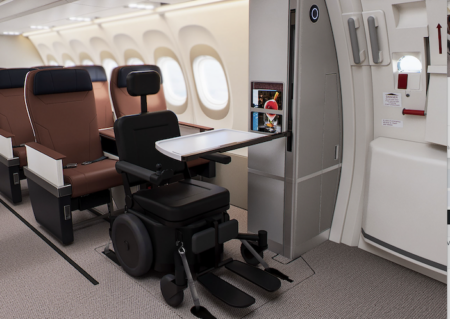ST Engineering’s Commercial Aerospace division has received a Supplemental Type Certificate (STC) from EASA for its Access aircraft lavatory, which is currently designed for installation on the Airbus A320 family.
Developed with passengers with reduced mobility (PRMs) in mind, the Access lavatory solution can be expanded to create around 40% additional floor space, sufficient to accommodate a passenger in a wheelchair and an accompanying caregiver.
Following the successful certification for implementation on the A320 aircraft family, ST Engineering is now working to make Access available on the Boeing 737 platform. The design of Access for the B737 has already been completed, with certification being targeted for 2024.
In order to minimise retrofitting costs and barriers to adoption for operators, Access has been designed for easy installation, requiring no reduction in seat count and galley space while accommodating existing structural attachment points as well as electrical and system connections.
Once installed, when required the Access lavatory can be readily deployed within seconds by individual crew members and easily returned to its original state when not in use. The design has been developed to fulfil all the proposed requirements by the US Department of Transport to increase accessibility for lavatories on narrowbody aircraft.
Earlier this year, ST Engineering entered into an LOI with Vaayu Group to provide the latter with 20 units of Access for installation on Airbus A320 and Boeing 737 aircraft, making Vaayu the launch customer.
“The EASA certification marks a significant milestone for us in bringing to market a viable cabin interior solution that makes air travel more inclusive,” said Ling Meng Geah, director of programme office, cabin interiors and engineering solutions at ST Engineering. “As we work towards more certifications and extending the solution to more aircraft platforms, we hope that like-minded operators will jump onboard with the adoption of Access so that as many passengers with reduced mobility as possible can benefit from it.”





